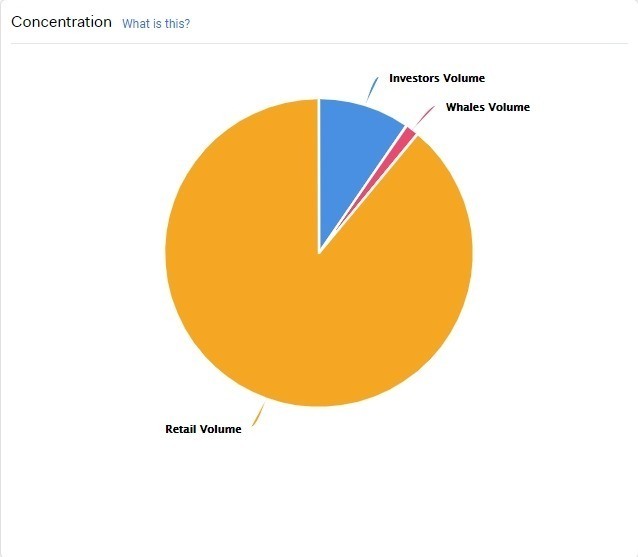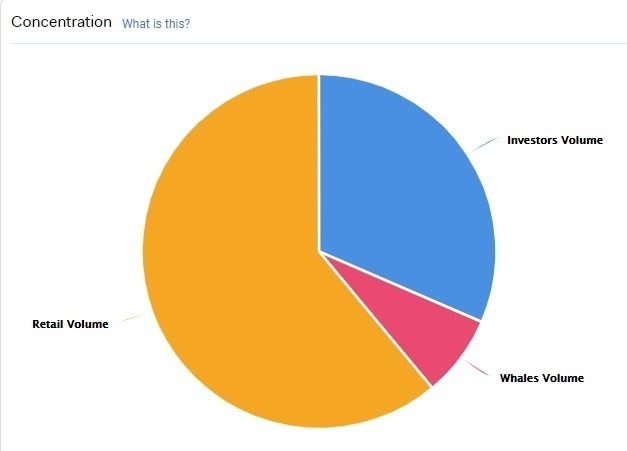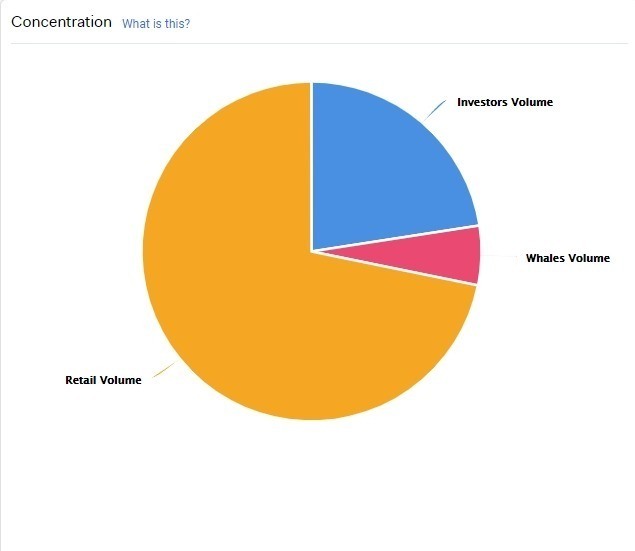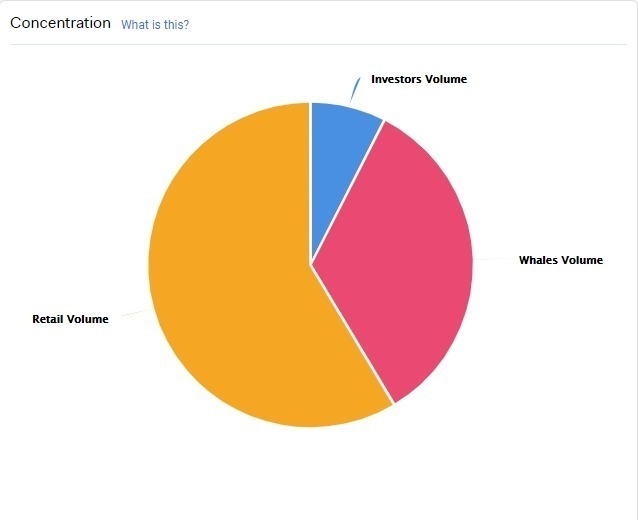- The mining protocol influences the ownership structure of cryptocurrencies.
- Bitcoin is the most popular King; most of its owners are retailers.
- Cardano shows some vulnerability to very powerful holders.
Financial analysts always keep an eye on the percentages by type of owner of any asset they analyze.
Everybody assumes that the owners of the professional investment group are on the right side of the market, while the individual investor is often on the wrong side of the market.
As a rule, the group of professional investors has priority access to new investment proposals. They have priority access to new company IPOs, capital available, and expert information.
In contrast, the individual investor often lags behind the decisions of professionals, buying what they want to sell, and selling what they want to buy.
The Crypto Market.
The cryptocurrencies case is different from any other current asset.
The crypto market is relatively recent, as it is only 11 years since Satoshi Nakamoto published the White Paper of Bitcoin.
In the beginning, the only ones who had access to the appreciated token were technologists, cryptographers, developers and a few geeks who put their computers to mine Bitcoins.
That was more than a decade ago and today, there are still very few owners of Bitcoins with illustrious surnames from the financial world.
Who owns the Crypto market?
Despite the relative opacity that surrounds cryptocurrencies, the only thing truly opaque is the name of the owner and that’s only in the cases in which exchange does not intervene. The rest of the information is public, freely accessible and decentralized.
This quality of blockchain technology allows us to know some exciting things that would be difficult for us to know in the case of Gold or Diamonds.
In this blockchain world, people store the units of value in digital wallets and their content and movements are public. The magnitudes to be taken into account and which are public are the number of tokens they keep and the time since the last transaction.
Today I am going to analyze the first of these magnitudes: the accumulated volume and its distribution.
Let's take a look at the profile of owners of the leading cryptocurrencies and their implications.
The study divides the owners of cryptocurrencies into three groups:
- Retailers: Wallets that have less than 0.1% of the total circulating.
- Investors: Wallets that have between 0.1% and 1% of total current assets.
- Whales: Wallets with more than 1% of total existing assets. *
* Whales is the name given to large owners, usually early adopters of this technology and accumulating hundreds of thousands of tokens.
Bitcoin
Bitcoin has a very democratized distribution. 88.99% of the wallets belong to the group of Retailers, 9.59% to the group of investors and only 1.41% of whales.

Source: Intotheblock
From this distribution, we could deduce that the Bitcoin market is not as vulnerable to whale manipulations as it is believed and that a majority of its holders have small quantities.
Ethereum
Ethereum is distributed among retailers at 61.03%, while investors reach 31.51% and whales reach the figure of 7.45%.

Source: Intotheblock
In the case of Ethereum, we see that it is more vulnerable to massive actions since, between investors and whales, they approach the percentage control of the asset. This distribution highlights that Ethereum uses PoS (Proof of Stake) as a mining protocol, which requires "stacking" tokens and makes investors not sell their stocks massively.
Bitcoin Cash
The BCH is distributed among retailers at 71.8%, while investors reach 22.57% of the total working capital. Whales account for 5.63%.

Source: Intotheblock
The Bitcoin Cash case resembles the Ethereum profile, but in this case, it uses a PoW (Proof of Work) protocol in its mining, which does not require stacking tokens to increase the mining power. This mining method could justify because its owner profile is more similar to that of Bitcoin, which also uses PoW.
Litecoin
The distribution of Litecoin among retailers is 53.48%; investors accumulate 40.91% of the wallets and whales keep 5.62% of the total circulating.

Source: Intotheblock
Litecoin uses a PoW (Proof of Work) protocol, similar to Bitcoin, although the former makes intensive use of computational memory and the latter of computing power. As we can see, investors, who are not obliged to stack Litecoins, keep them in their portfolios in a massive way.
Cardano
The distribution of Cardano among retailers is 58.59%; investors accumulate 7.52%, and whales gather a significant 33.89%.

Source: Intotheblock
Cardano uses a PoS (Proof of Stake) protocol. From the profile we have just seen, the original whales still maintain a large number of tokens and ultimately dominate the mining. The profile also shows a high vulnerability of Cardano to the great concentration of the current total.
Information on these pages contains forward-looking statements that involve risks and uncertainties. Markets and instruments profiled on this page are for informational purposes only and should not in any way come across as a recommendation to buy or sell in these assets. You should do your own thorough research before making any investment decisions. FXStreet does not in any way guarantee that this information is free from mistakes, errors, or material misstatements. It also does not guarantee that this information is of a timely nature. Investing in Open Markets involves a great deal of risk, including the loss of all or a portion of your investment, as well as emotional distress. All risks, losses and costs associated with investing, including total loss of principal, are your responsibility. The views and opinions expressed in this article are those of the authors and do not necessarily reflect the official policy or position of FXStreet nor its advertisers. The author will not be held responsible for information that is found at the end of links posted on this page.
If not otherwise explicitly mentioned in the body of the article, at the time of writing, the author has no position in any stock mentioned in this article and no business relationship with any company mentioned. The author has not received compensation for writing this article, other than from FXStreet.
FXStreet and the author do not provide personalized recommendations. The author makes no representations as to the accuracy, completeness, or suitability of this information. FXStreet and the author will not be liable for any errors, omissions or any losses, injuries or damages arising from this information and its display or use. Errors and omissions excepted.
The author and FXStreet are not registered investment advisors and nothing in this article is intended to be investment advice.
Recommended Content
Editors’ Picks
SEC doubles down on TRON's Justin Sun lawsuit dismissing claims over jurisdiction

The SEC says it has jurisdiction to bring Justin Sun to court as he traveled extensively to the US. Sun asked to dismiss the suit, arguing that the SEC was targeting actions taken outside the US.
XRP fails to break past $0.50, posting 20% weekly losses

XRP trades range-bound below $0.50 for a sixth consecutive day, accumulating 20% losses in the last seven days. Ripple is expected to file its response to the SEC’s remedies-related opening brief by April 22.
ImmutableX extends recovery despite $69 million IMX token unlock

ImmutableX unlocked 34.19 million IMX tokens worth over $69 million early on Friday. IMX circulating supply increased over 2% following the unlock. The Layer 2 blockchain token’s price added nearly 3% to its value on April 19.
Bitcoin Weekly Forecast: BTC post-halving rally could be partially priced in Premium

Bitcoin price briefly slipped below the $60,000 level for the last three days, attracting buyers in this area as the fourth BTC halving is due in a few hours. Is the halving priced in for Bitcoin? Or will the pioneer crypto note more gains in the coming days?
Bitcoin: BTC post-halving rally could be partially priced in Premium

Bitcoin (BTC) price briefly slipped below the $60,000 level for the last three days, attracting buyers in this area as the fourth BTC halving is due in a few hours. Is the halving priced in for Bitcoin? Or will the pioneer crypto note more gains in the coming days?